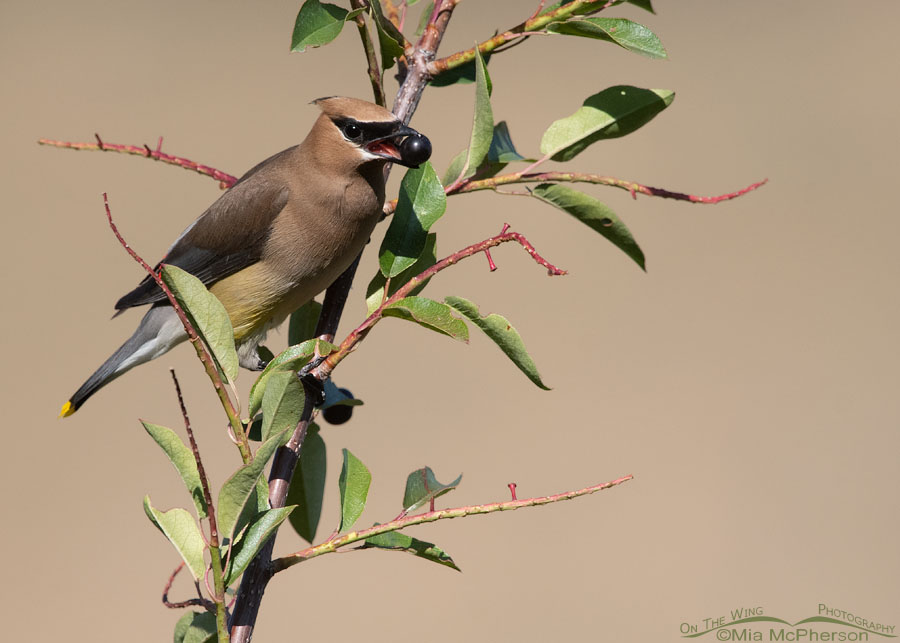 Cedar Waxwing eating chokecherries – Nikon D500, f6.3, 1/2500, ISO 640, Nikkor 500mm VR with 1.4x TC, natural light
Cedar Waxwing eating chokecherries – Nikon D500, f6.3, 1/2500, ISO 640, Nikkor 500mm VR with 1.4x TC, natural light
Regular visitors to my blog posts here may remember that I did a post called Flowering Chokecherry Trees – AKA Blooming Bird Food in June of this year and that in that post I said that I wanted to add images to my portfolios of birds other than American Robins eating the chokecherries, well I can add this photo!
Two days ago I was up in the Wasatch Mountains and heard a Cedar Waxwing near some chokecherry trees. Once I spotted the waxwing I waited until I could get a clear shot of it with a chokecherry in its beak. I’m happy with this image even though the sun was a little bit higher than I would have liked which caused stronger shadows than I normally care for.
I’m more than a little disappointed though because these chokecherry trees were full of ripening fruits and I must have missed the feeding frenzy of birds gorging on them by a couple of days because it seemed that on one trip up into the mountains the branches of these particular chokecherries were bending over they were so heavy with fruit and then a few days later on my next trip up to find birds they were nearly picked clean. These birds that eat the chokecherries know when the fruit is ripe enough to suit their tastes better than I do.
For instance, I had a privet in my backyard in Georgia that had loads of fruit in the fall but near Christmas when my grandmother was visiting a huge flock came in and picked the tree clean in less than an hour while we watched them. The same thing would happen each year with a pyracantha bush I had in my yard in Virginia. The waxwings seem to know exactly when the fruits are the tastiest.
Perhaps next year if there is better fruit production on the chokecherries than there has been this year I should just camp out near some of the chokecherry trees for days on end to catch the feeding frenzy.
I may just have to do that.
Life is good.
Mia
Click here to see more of my Cedar Waxwing photos plus facts and information about this species.


Great photo. I love those masked bandits.
Happy that your subject caught one of the last disappearing chokecherries! We have many “wild” Ligustrums (privets as I called them back in New Jersey), maybe in the same family) which had very fragrant tubular white flowers that smelled like Honeysuckle. Now I am awaiting for that abundant fruit to feed the vireos and warblers (especially the Black-throated Blue) which will likewise clean up the berries in very few days. Just like your chokecherries they are there on day and gone the next.This morning I checked and they are just tiny green pin-head size.
Fantastic!
This is a terrific image. I love how the background compliments the bird’s plumage.
Great isolation of the sharply focused bird in action eating with a very soft smooth background.
Very nice!